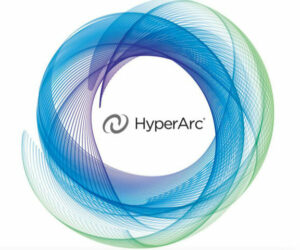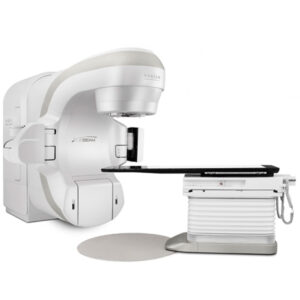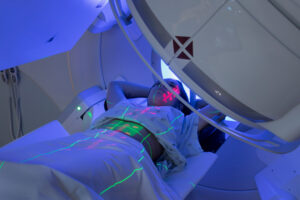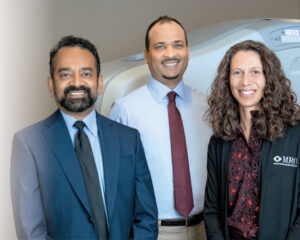Radiation Technology
Advancing Cancer Care: Technology Benefits at Minneapolis Radiation Oncology for Physicians
At Minneapolis Radiation Oncology (MRO), we are committed to equipping our physicians with the most advanced radiation therapy technologies available. These cutting-edge tools empower our specialists to deliver highly precise, effective, and personalized cancer treatments, ultimately leading to improved outcomes and enhanced patient care.



Precision and Accuracy: Targeting Cancer with Unprecedented Detail
The cornerstone of modern radiation oncology lies in its ability to target cancerous cells with extreme precision while minimizing impact on surrounding healthy tissues. MRO physicians leverage a suite of sophisticated technologies to achieve this:
- Intensity-Modulated Radiation Therapy (IMRT): This advanced form of 3D conformal radiation therapy uses computer-controlled linear accelerators to deliver precise radiation doses that conform to the exact three-dimensional shape of the tumor. It allows for varying radiation intensities across the treatment field, ensuring the tumor receives a high dose while critical organs nearby are spared.
 Volumetric Modulated Arc Therapy (VMAT): An evolution of IMRT, VMAT delivers radiation continuously as the treatment machine rotates around the patient. This dynamic delivery system significantly shortens treatment times while maintaining or even enhancing the precision of dose delivery and healthy tissue sparing.
Volumetric Modulated Arc Therapy (VMAT): An evolution of IMRT, VMAT delivers radiation continuously as the treatment machine rotates around the patient. This dynamic delivery system significantly shortens treatment times while maintaining or even enhancing the precision of dose delivery and healthy tissue sparing.- Stereotactic Body Radiation Therapy (SBRT) & Stereotactic Radiosurgery (SRS): These techniques deliver very high doses of radiation in a few, highly focused treatments. SBRT is used for tumors in the body (lungs, liver, spine), while SRS is specifically for brain and head/neck tumors. Their pinpoint accuracy makes them ideal for patients who may not be candidates for surgery or for treating recurrent cancers.
- Image-Guided Radiation Therapy (IGRT): Integrating imaging directly into the treatment process, IGRT allows physicians to take detailed images (like CT scans or X-rays) immediately before or even during each treatment session. This real-time imaging ensures that the tumor’s position is precisely aligned, accounting for subtle daily shifts in anatomy and improving the accuracy of radiation delivery.
- Surface Guided Radiation Therapy (SGRT): This non-invasive technology uses 3D camera systems to track the patient’s external surface in real-time. It helps ensure precise patient positioning and monitors for movement during treatment, enhancing accuracy without the need for skin marks.
- TrueBeam Linear Accelerator: A versatile and powerful radiotherapy system, the TrueBeam allows for the rapid and precise delivery of various radiation therapies, including IMRT, VMAT, and SBRT. Its advanced capabilities enable physicians to treat complex cancers efficiently and effectively.
Enhanced Patient Outcomes: Minimizing Side Effects and Optimizing Efficacy
The technological advancements at MRO translate directly into tangible benefits for patients, guided by the expertise of our physicians:
- Reduced Side Effects: By precisely targeting tumors and sparing healthy tissue, these technologies significantly reduce the common side effects associated with radiation therapy, leading to a better quality of life during and after treatment.
- Shorter Treatment Courses: Techniques like VMAT and SBRT can dramatically reduce the number of treatment sessions required, making therapy more convenient and less burdensome for patients.
 Higher Curative Potential: The ability to deliver higher, more conformal doses to tumors increases the likelihood of tumor control and eradication, even for challenging cases.
Higher Curative Potential: The ability to deliver higher, more conformal doses to tumors increases the likelihood of tumor control and eradication, even for challenging cases.- Improved Visualization (e.g., MRIdian LINAC – where available): While not universally available, technologies like the MRIdian LINAC, which integrates an MRI scanner with a linear accelerator, offer real-time visualization of soft tissues and tumors during treatment. This allows physicians to adapt the treatment plan dynamically to changes in the patient’s anatomy, further enhancing precision and effectiveness.
Expanded Treatment Options and Collaborative Care
MRO’s commitment to advanced technology broadens the scope of treatable conditions and fosters a more integrated approach to cancer care:
- Treatment for Complex Cases: These technologies enable physicians to treat tumors in difficult-to-reach areas or those close to critical organs, offering hope to patients who might otherwise have limited options.
- Non-Surgical Alternatives: For patients who are not candidates for surgery due to age, co-morbidities, or tumor location, SBRT and SRS provide highly effective non-invasive alternatives.
- Multidisciplinary Approach: The precision and flexibility of these technologies facilitate seamless integration with other cancer treatments like surgery and chemotherapy. MRO physicians work closely with referring surgeons and medical oncologists, using these tools to optimize combined modality treatments, whether shrinking tumors before surgery, eliminating residual cells afterward, or providing palliative relief.
- Streamlined Workflow: Advanced planning software and integrated imaging systems improve the efficiency of treatment planning and delivery, allowing physicians and their teams to focus more on patient care and less on logistical challenges.
The continuous integration of cutting-edge radiation technology at Minneapolis Radiation Oncology empowers our physicians to deliver superior cancer care. By providing tools for unparalleled precision, minimizing side effects, expanding treatment possibilities, and fostering collaborative workflows, MRO ensures that patients in the Twin Cities and surrounding areas receive the most advanced and compassionate radiation therapy available. Our commitment to technological excellence is a testament to our dedication to fighting cancer with the greatest possible impact.